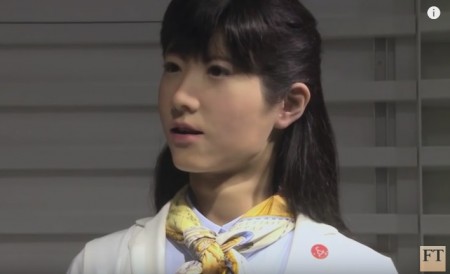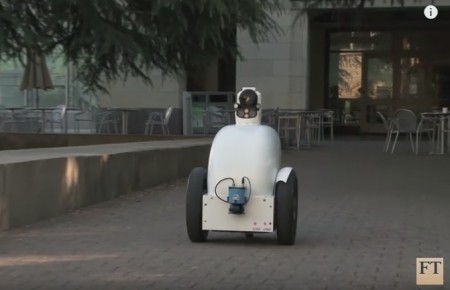May 20, 2016 – Should robots look like us? In Japan making robots appear human is all the rage. In North America not so much. Why the difference?
In the movie documentary, Man or Machine? Building Robots Like Us, we are introduced to the two paradigms. The Japanese one focuses on building robots with faces and bodies that look just like us. These are androids and Kana Inagaki, of the Financial Times, talks to one of them, a popular late-night TV host named Matsukoroid.
Takeshi Mita, Chief Executive of A-Lab, co-creator of Matsukoroid, states that people “may find it creepy or scary when they first see an android.” But, “humans are more flexible so they are able to accept the existence of andorids as time passes…a phenomenon that does not occur with other robots.”
The Japanese approach is to make technology more appealing to the masses and less machine-like. States Hideo Aruga, Senior Manager, Toshiba, “There are people who are simply not good with machines….the elderly, children and people with disabilities. For these people, it’s important…to have androids who can…transmit information for them.” Toshiba is the creator of the Chihira robot (seen below), a kiosk hostess that last October was introduced to the public in a Tokyo shopping mall.
The Japanese see android robots as the answer to the changing demographics in their country. With the largest number of elderly on the planet and a declining birthrate Japan sees androids as ideal replacements for fewer and fewer human workers. Androids can work in childcare. Androids can look after the elderly. Androids can help the disabled. The designers believe the public feels the connection because of the human-like characteristics of these machines.
It is an interesting perspective not shared by robotics researchers in the United States states Richard Waters of the Financial Times. He describes the approach of North America’s Silicon Valley as focused on developing technology that is distinctly not human but aimed at learning to anticipate what we humans need done. Even robots that recently competed in DARPA’s robotic challenge, cannot be mistaken for humans despite most being bipedal and having two upper limbs.
At Stanford University, Assistant Professor, Silvio Savarese, describes the type of androids being developed in Japan as robots he believes can engender fear in people. He argues that robots should be functional and cute, not anthropormophic. Savarese and his colleagues, in the Computational Vision and Geometry Lab at Stanford, are the creators of the Jackrabbot, (seen below) a self-navigating automated electric delivery cart that can operate in the presence of humans without running into them.
Savarese isn’t the only one arguing that “gratuitous anthropomorphism” is sending the wrong message. Jerry Kaplan, a Silicon Valley entrepreneur argues that connecting with an android socially is “a lie, a falsehood.” He argues that android caretakers working with the elderly and disabled are incapable of feeling empathy. Sebastian Thrun, the mind behind Google’s autonomous car, also argues that robots should complement humans to achieve specific tasks, not attempt to replace them by resembling them.
It’s an interesting debate and one well described in the documentary. I highly recommend you view it on YouTube or on the home page right sidebar here at www.21stcentech.com.










